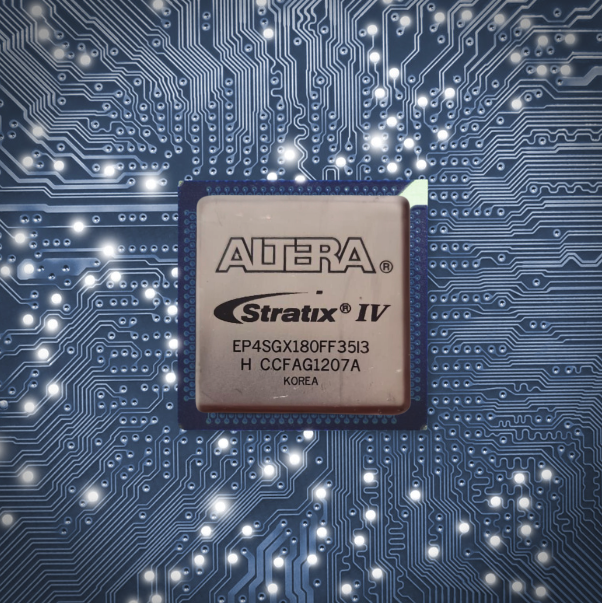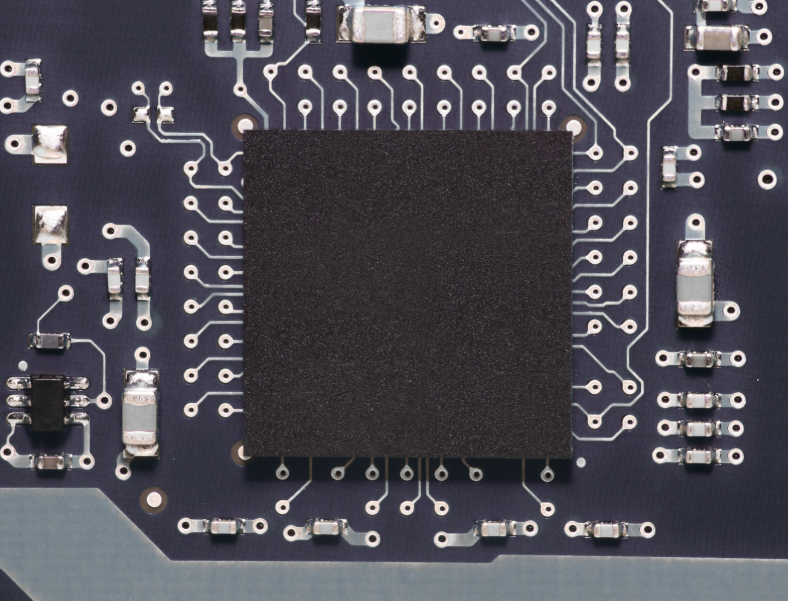NXP FPGAs vs Altera FPGAs: Comparing Powerhouse of FPGAs

More from the Category
Field-programmable gate arrays (FPGAs) play a crucial role in modern technology, enabling the development of complex digital systems. Today, we’ll explore the offerings of two industry powerhouses, NXP and Altera, comparing their strengths, capabilities, and applications.
NXP FPGAs
NXP has established itself as a leader in semiconductor solutions, offering a diverse range of products tailored to meet the demands of various industries. Regarding FPGAs, NXP leverages its expertise to deliver high-performance solutions suited for a wide array of applications.
Processing Power: NXP FPGAs have powerful processing capabilities featuring multiple high-performance cores. This makes them ideal for applications that require heavy data processing or real-time computing, such as wireless communication systems, industrial automation, and automotive electronics.
Enhanced Security: In an increasingly connected world, security is paramount. NXP prioritizes security in its FPGA designs, incorporating features like secure boot, cryptographic accelerators, and tamper resistance. These measures make NXP FPGAs suitable for applications that handle sensitive data or require robust protection against cyber threats.
Energy Efficiency: NXP emphasizes energy efficiency, designing FPGAs with low power consumption without compromising performance. This makes them suitable for power-constrained applications such as battery-powered devices, IoT devices, and edge computing solutions. The combination of high performance and energy efficiency makes NXP 1Gas an attractive choice for various industries.
Altera FPGAs
Altera has been at the forefront of FPGA innovation for several decades, offering exceptional performance, versatility, and a wide range of features.
Programmability and Flexibility: Altera FPGAs are known for their flexibility, allowing developers to reconfigure their functionality on demand. This enables rapid prototyping, system optimization, and design modifications without the need for hardware changes. The ability to adapt to changing requirements makes Altera FPGAs a preferred choice for dynamic applications.
High Capacity and Integration: Altera FPGAs feature high logic capacity, enabling the implementation of complex designs. Additionally, they offer extensive integration capabilities, incorporating various hard intellectual property (IP) cores such as processors, memory controllers, and DSP blocks. This simplifies system integration and reduces development time, making Altera FPGAs desirable for projects with performance and integration requirements.
Advanced Tooling and Ecosystem: Intel FPGA provides a comprehensive suite of development tools, including Quartus Prime, which offers a user-friendly environment for FPGA design and verification. Their ecosystem also includes a vast library of IP cores, reference designs, and community resources, fostering collaboration and expediting development cycles. The robust tooling and ecosystem support Intel FPGA provides enhances the overall development experience.
NXP FPGAs Product Lines
NXP offers a wide range of Field-programmable gate Arrays (FPGAs) under different product families.
Layerscape: The Layerscape family includes FPGAs that are designed for high-performance networking and data processing applications. These FPGAs are optimized for network infrastructure, 5G base stations, and industrial automation.
S32: The S32 family of FPGAs from NXP focuses on automotive applications. These FPGAs provide advanced processing power and real-time computing capabilities for applications such as advanced driver assistance systems (ADAS), vehicle infotainment, and vehicle control units (VCUs).
i.MX: While not strictly FPGAs, NXP’s i.MX series of application processors are often used alongside FPGAs for various applications. These processors provide powerful computing capabilities and are commonly utilized in automotive, industrial, and consumer electronics.
Altera FPGA Product Lines

Altera has a rich portfolio of FPGAs known for their high performance and versatility.
Stratix: The Altera Stratix series is Altera’s flagship FPGA family, is known for its high-density and high-performance capabilities. These FPGAs are widely used in applications such as high-performance computing, aerospace and defense, and wireless communication.
Arria: The Arria family of FPGAs balances performance and power efficiency. These FPGAs are well-suited for various applications, including automotive, industrial automation, and medical devices.
Cyclone: The Cyclone series offers cost-effective FPGAs that focus on low power consumption and versatility. These FPGAs find applications in embedded systems, IoT, and consumer electronics fields.
Max: Altera’s Max series comprises low-cost, low-power FPGAs suitable for entry-level and educational applications. These FPGAs are ideal for learning, prototyping, and smaller-scale projects.
These Altera FPGA families provide developers with diverse options to meet their specific performance, power, and cost requirements.
Enabling Innovation Across Industries
NXP and Altera have emerged as industry leaders, revolutionizing the field of FPGA technology, and paving the way for innovative solutions across various sectors.
Automotive and Transportation
NXP: NXP FPGAs drive cutting-edge automotive electronics, enabling advanced driver assistance systems (ADAS), V2X communication, and immersive in-cabin experiences. With exceptional processing power and real-time computing capabilities, NXP FPGAs enhance safety and efficiency on the road.
Altera: Altera FPGAs play an important role in the automotive sector, serving as the backbone of vehicle control units (VCUs) that manage critical functions such as engine control, transmission management, and ABS systems. Their adaptability ensures compliance with evolving automotive standards while maintaining peak performance.
Telecommunication and Networking
NXP: NXP FPGAs drive the growth of 5G networks, enabling efficient data processing and high-speed data handling in 5G base solutions. They are essential for enabling robust and reliable connectivity and driving innovation in next-generation telecommunications.
Altera: Altera FPGAs are key in advancing telecommunication and networking, providing the high-performance processing needed for 5G infrastructure, cloud networking, and data centers. Their adaptability and scalability ensure seamless integration into next-generation communication systems, enhancing network efficiency and reliability.
Aerospace and Defense
NXP: NXP FPGAs are trusted in avionics systems, radar processing, electronic warfare, and secure communications. They deliver unbeatable processing power consumption and enhanced security features. Designed to meet the rigorous demands of aerospace and defense, they provide unmatched reliability in mission-critical applications.
Altera: Altera FPGAs are vital components of electronic warfare systems, radar processing, and signal processing applications in aerospace and defense. Their reconfigurable nature allows for swift adaptation to ever-evolving threats and ensures superior performance in critical missions.
Industrial Automation and Control
NXP: NXP FPGAs are designed for industrial automation and deliver high-performance processing capabilities for applications like robotics, PLCs, and smart factories. They empower efficient and precise control in complex industrial systems, driving productivity and innovation.
Altera: Altera FPGAs empower industrial control systems, offering unparalleled flexibility for diverse control algorithms and real-time processing tasks. From motor control to process automation and sensor interfacing, these FPGAs enable seamless integration of advanced automation technologies.
Data Centers and High-Performance Computing
NXP: NXP FPGAs are within data centers and excel in high-performance computing applications, providing accelerated data compression, encryption, and workload optimization. Their energy efficiency is particularly valuable in reducing the carbon footprint of large-scale computing environments.
Altera: In high-performance computing, Altera FPGAs facilitate the lightning-fast acceleration of computationally intensive algorithms. Their exceptional processing power and adaptability drive efficiency and innovation across demanding applications, from scientific simulations and weather forecasting to financial modeling.
These examples highlight the impressive versatility and impact of NXP and Altera FPGAs across various industries. As both companies push the limits of FPGA technology, we can expect even more groundbreaking applications and transformative advancements in the future.
Real-World Examples
NXP FPGAs in Automotive Electronics: NXP FPGAs have gained recognition for their usage in automotive electronics. They play a crucial role in advanced driver assistance systems (ADAS), enabling features such as object detection, lane departure warning, and adaptive cruise control. The processing power and real-time computing capabilities of NXP FPGAs contribute to safer and more efficient driving experiences.
Altera FPGAs in Data Centers: Altera FPGAs have found extensive application in data centers, providing high-performance acceleration for computationally intensive tasks. By offloading specific workloads to FPGA-based accelerators, data centers can enhance performance while reducing power consumption. Altera FPGAs have proven instrumental in accelerating tasks such as artificial intelligence (AI) inference, database querying, and network packet processing.
NXP and Altera FPGAs in 5G Networks: The advent of 5G technology has introduced new challenges and requirements for network infrastructure. Both NXP and Altera FPGAs have played significant roles in developing and deploying 5G networks. NXP FPGAs enable efficient processing and high-speed data handling base stations, while Altera FPGAs offer flexible solutions for network slicing, radio access networks (RAN), and virtualized network functions (VNF).
Altera FPGAs in High-Performance Computing: Altera FPGAs have made a mark in the realm of high-performance computing (HPC). Their reconfigurable nature allows for custom acceleration of computationally intensive algorithms, providing significant performance boosts. In fields such as scientific research, weather forecasting, and computational finance, Altera FPGAs offer the ability to tailor compute resources to complex simulations and data analysis needs.
These real-world examples highlight the versatile applications and impact of NXP FPGAs and Altera FPGAs across various industries. As technology advances, these powerful FPGA solutions will likely find even more innovative and transformative applications.
Future Trends and Innovations in NXP FPGAs and Altera FPGAs

Advancements in AI and Machine Learning: As AI and machine learning applications continue to grow, NXP and Altera are enhancing their FPGA platforms to better support these workloads. This includes integrating specialized hardware for neural network acceleration, optimizing memory architectures for deep learning algorithms, and providing comprehensive AI development and deployment tooling.
Increased Connectivity and IoT Integration: With the proliferation of IoT devices, there is a growing need for FPGAs that can efficiently handle massive amounts of data and provide seamless connectivity. Both NXP and Altera invest in technologies that enable better integration with IoT ecosystems, such as enhanced wireless communication interfaces, increased security features for IoT devices, and optimized power consumption for battery-operated IoT applications.
Edge Computing and Real-Time Analytics: Edge computing is becoming increasingly important, enabling faster data processing and analysis at the network's edge. In response to this trend, NXP and Altera are developing FPGAs that excel in real-time analytics, low-latency processing, and efficient data movement between edge devices and cloud systems. These advancements will enable applications such as autonomous vehicles, industrial IoT, and smart cities to harness the power of real-time data processing.
Enhanced Security Features: As cybersecurity threats continue to evolve, both NXP and Altera are strengthening the security features of their FPGA platforms. This includes integrating advanced encryption and authentication mechanisms, implementing security-aware design practices, and providing robust tools for secure firmware updates and remote management. These advancements address the increasing need for secure and trustworthy systems in critical industries like healthcare, finance, and government sectors.
Continued Collaboration and Ecosystem Development: NXP and Altera understand the importance of fostering collaboration within the FPGA community. They will likely continue investing in building vibrant ecosystems that provide developers access to a wide range of IP cores, reference designs, and community support. This collaboration will enable faster development cycles, knowledge sharing, and the creation of innovative solutions across industries.
By staying informed about emerging trends and innovations in NXP and Altera FPGAs, developers and engineers can remain at the forefront of technology, harnessing the latest advancements to drive innovation in their fields. Check out the latest FPGA technology here!
NXP vs Altera FPGAs
NXP and Altera bring unique advantages to the FPGA market, serving various industries. NXP’s FPGAs are powerhouses, with processing power and security smarts that make them the top choice for applications where energy efficiency, precision, and reliability are key.
On the other hand, Altera FPGAs feature a powerful programmability advantage, adaptability, a high level of integration, and a strong tooling ecosystem for complex designs and quick prototyping.
When deciding between an NXP FPGA and an Altera FPGA, it is important to weigh which factors best match the specific project and application requirements. Consider which occasion features best meet the needs of the current scenarios – such as power, design complexity, prototyping capabilities, and level of security – to make the best and most informed choice.
Need FPGAs?
Looking for the right FPGA for your project? Microchip USA has you covered! We supply a wide range of NXP and Altera FPGAs, along with other essential components to keep your designs running smoothly. Whether you need high-performance solutions or reliable parts for your production line, we’re here to help. Contact us today!